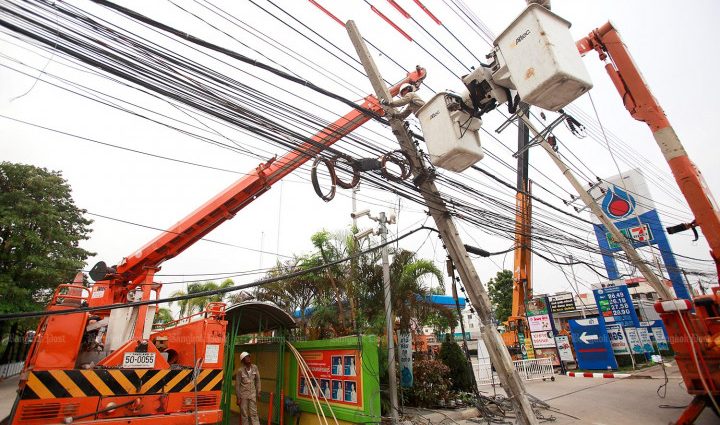PUBLISHED : 28 Jul 2023 at 05:32

The Metropolitan Electricity Authority (MEA) has promised to change the city’s landscape by putting a total of 1,454 kilometres of electrical wires underground within 10 years.
Speaking at a press conference ahead of its 65th anniversary on Aug 1, MEA governor Wilas Chaloeysat said that the authority has firmed up its policy to provide electric power services to over 14 million people in Bangkok, Nonthaburi and Samut Prakan.
This will be done by making it more convenient and efficient through smart technology that helps the MEA better manage the electricity system under a project aimed at smarter metro grids and smarter meters.
Regarding the smart metro grid project, he said the MEA has conducted a survey along main roads in the capital and its vicinity and found that more than 1,000km of MEA cable wires need to be put underground. The aim is to complete the project within 10 years, he said.
The main focus areas are along Skytrain and metro train lines. Currently, a total of 91km of electric wires have already been placed underground, covering major business areas and roads, such as in Sathon district.
The MEA will expand the project to cover another 236.1km by 2027. A total length of 1,454km will be moved to underground pipes, he said.
He also said the MEA will provide more smart meters — from 33,265 to 441,400 sets by 2027. The smart meter system will help MEA staff detect system errors and fix problems immediately before client complaints are made.
“We are making big changes for people living in the city to make life more convenient. We have followed our principle of ‘Go Smart, Go Digital and Go Green’ for a sustainable future,” he said.
He also said that the MEA has already rolled out a plan to support the government’s policy on promoting electric vehicles (EV) under an EV ecosystem.
Thailand is expected to have 6.6 million electric cars by 2037. The MEA has already established EV charging stations, designed smart charging systems for households and developed transformer load monitoring to prevent electricity overloads.
It is expected that the amount of electricity used will increase by 13% per year based on stronger demand and a higher number of EV cars.
For this year, the MEA forecasted that the amount of electricity used will reach 51,388 million units — a 0.84% increase from last year.

